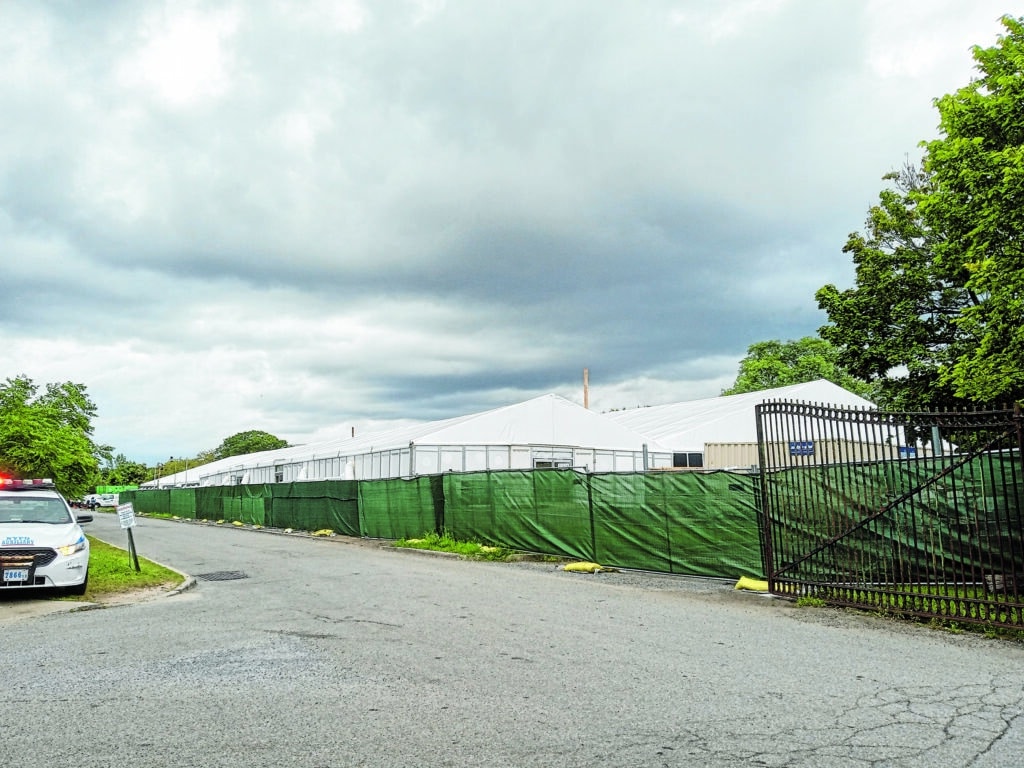Regardless of one’s stance in the voting booth, it’s apparent that our region has recently been rocked by the ongoing migrant crisis, wherein millions of people around the world are travelling far from home to seek better economic, environmental, and/or sociopolitical ground for themselves and their families. In New York State, migrants and frequently asylum-seekers from places like Ukraine, West Africa, South and Central America, and the Carribbean have been arriving in our cities and towns, and in many cases struggling to access the legal or even day-to-day resources they need to start a life here.
In some cases migrants have been bussed or flown to New York under false pretenses or against their will by other states, but most that I’ve spoken to in the past year or so seemed to be feeling happy and inspired about arriving in New York, a place that is known and admired the world over. Others were simply passing through after a long journey on foot and by bus or boat, trying to get to Chicago, or Canada, or back to Texas, or willing to accept whatever bus or plane ticket that officials in New York, Texas, Florida, Arizona, or other places were offering to new arrivals at the time.
In Nassau County, the public and political tensions, conflicts, and confusion surrounding this reality have recently come to a head where Queens County borders New Hyde Park and Floral Park, at the massive and historical Creedmoor Psychiatric Center. The Creedmoor campus includes not only the Creedmoor Psychiatric Hospital to the north, just across from Alley Pond Park, but more than 50 acres of mostly green space dotted with brick buildings that house numerous rehab and long-term care facilities, a childcare center, and various other public services.

On the southern edge of the Creedmoor community campus, in a parking lot off Hillside Avenue, several large tents were erected recently to feed, bathe, and provide cots to up to 1000 single male migrants. The Humanitarian Emergency Response and Relief Center (HERRC) also provides some services on site, such as phone access, and registration for basic medical services, and has reportedly filled up quickly. The Creedmoor campus is also where a plan to develop housing, with 3000 units to start, was put forth with support from Governor Kathy Hochul and Queens Boro President Donovan Richards earlier this year.
When I visited Creedmoor and the HERRC there, it was in the days following multiple protests and press conferences there, where embattled U.S. Rep. George Santos declared that we should close our borders, and where Curtis Sliwa, a Guardian Angels founder who was formerly both a candidate for NYC mayor and married to Queens District Attorney Melinda Katz, planned and executed his own arrest (which he has done two more times in other locations in the week since, in addition to holding a rally outside a Brooklyn Toys ‘R Us against the proposed HERRC at isolated Floyd Bennett Field).
It was very quiet at Creedmoor campus on Thursday, August 24 as the sun shone for a while before the late-afternoon rains came. A few older men and women walked in paths across its wide, slightly overgrown lawns, or sat on porches of pre- or post-war group homes. Down on Hillside Ave., two women sat in chairs to check shelter residents’ lanyard IDs at the entrance to the HERRC, with a few scattered NYPD cruisers parked nearby. A handful of residents boarded city buses that came and went, or walked slowly toward Jamaica.
Across the street, in a small area of benches north of Detective William T. Gunn Playground, around ten people, mostly younger men from Africa, sat or chatted quietly with each other or with Healthfirst representatives to register for basic health check-ups or care from the state (such as bloodwork, or some free acetominophen). Two young people, a high schooler volunteering for a credit and a medical student planning to apply for residency soon, sat at a mostly bare folding table and smiled in welcome. They explained their role, and the high-schooler noted that neither of them spoke Spanish or French, so there had been a language barrier.
Shortly after, two men walked up with a few questions in Spanish, for which the medical student brought out his phone with a live translation app, which proved to be pretty slow. I get by in Spanish, having learned it in school, so I asked, “What’s going on, guys?” and proceeded to translate back and forth for several minutes about how to receive the free medical check-up, whether a referral could be made for optometry (to replace one of the men’s thick, three-year old lenses; “three years,” he tried out carefully and successfully in English), and whether the Healthfirst intake specialist on site, who was helping a group of three young men in French, would be there doing enrollments for a while longer (the men speaking in Spanish had just gotten off work, were hungry, and wanted to go eat quickly at the HERRC). In English I asked the specialist, whose eye I’d caught with my press badge and then again with my minutes of translation, and she nodded.
At one point, the medical student asked me how old one man was; he was 51. That meant he was also entitled to an endoscopy, the student said, which I explained for a bit, with decent success, before the man’s friend added, “Tu colon.” I joked, “Bienvenido a los Estados, cómo está su colon?”
Before the men left to eat lunch, the Healthfirst specialist called to and nodded again at the volunteers, who produced an almost-finished box of a dozen Dunkin Donuts, and the doctor smiled toward the three of us to take one. The men hesitated then took them appreciatively. I declined, but was assured, “We have lots.” So I accepted the last one in that box, having missed lunch myself. It was chocolate.
As I headed back north to where I’d parked, a saw a pair of young men in their late teens or early 20s walking excitedly in the same direction. They quietly said “Good morning” as they passed me, a bit shyly. As I continued walking slowly, taking in the green campus and lawns around me, another pair of young men passed, one with his arm around the other.
As I rounded the corner, I saw that they were heading into a gleaming mosque across the street from Creedmoor, and then they were gone.































